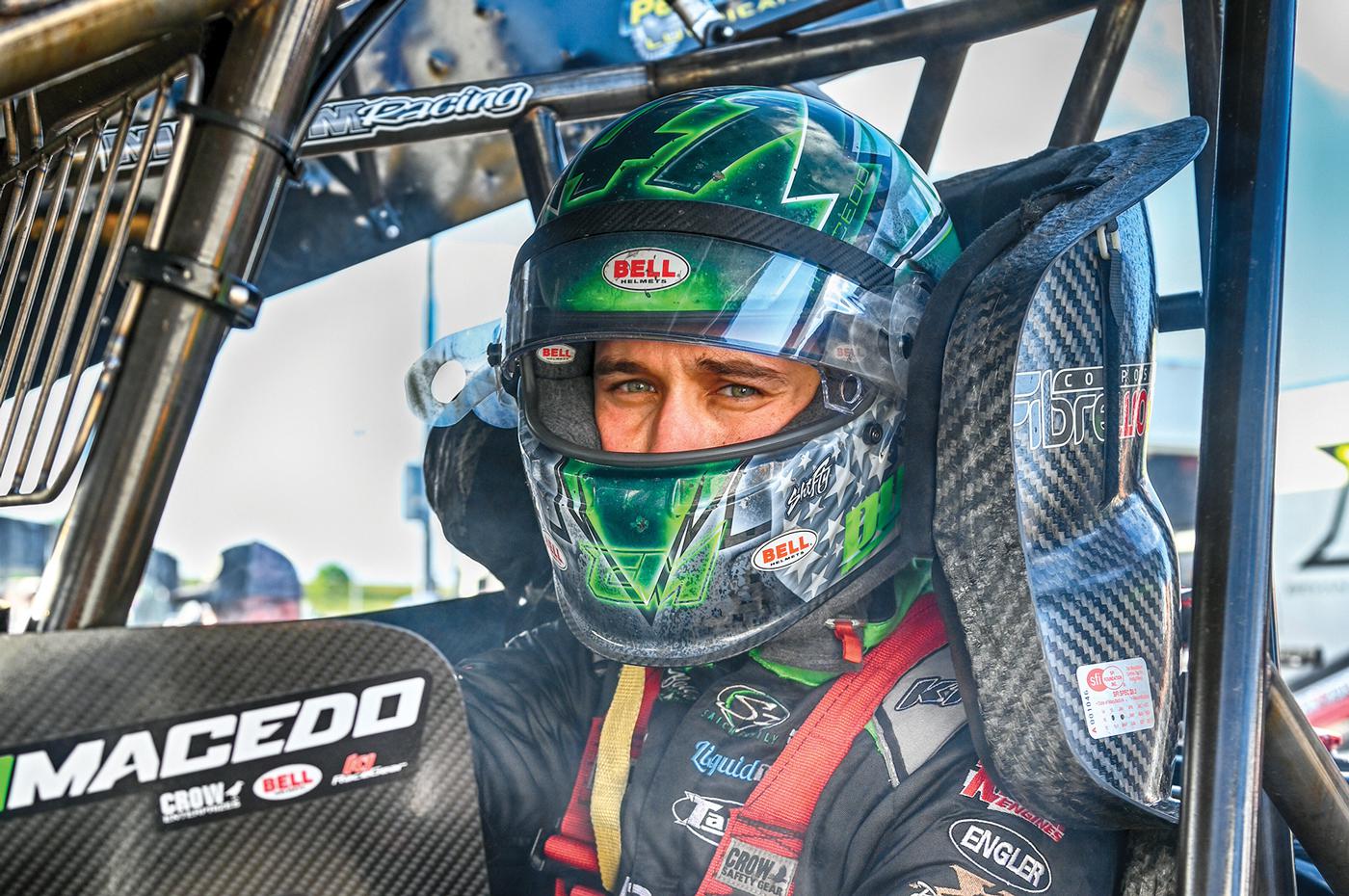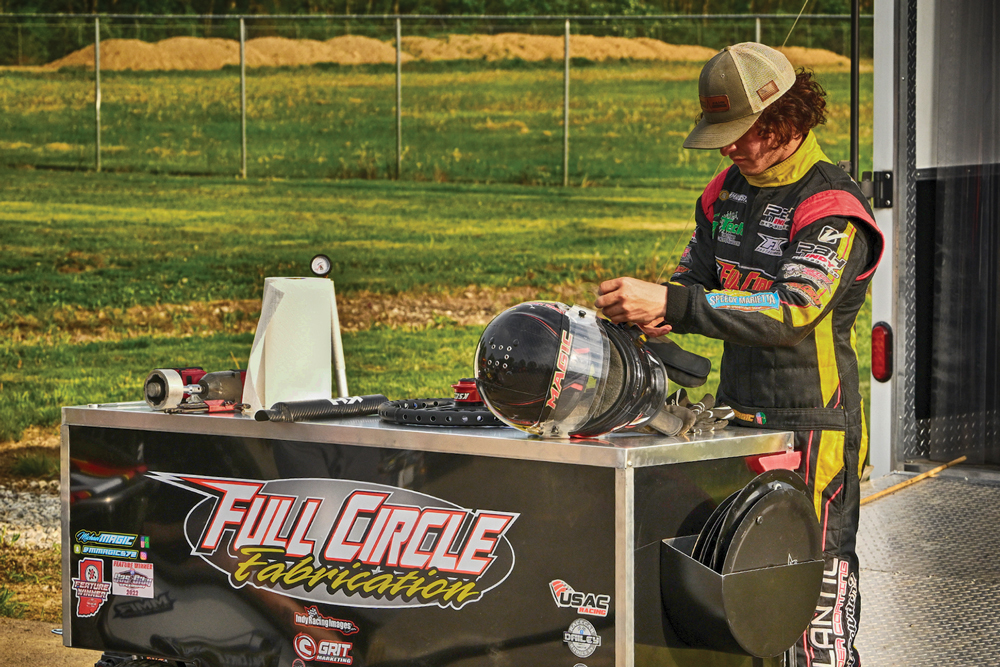Stop Doing That…Do This Instead: Safety Equipment Maintenance

Leaving a helmet in direct sunlight or near a hot engine can be harmful to the helmet, particularly its structure and overall performance, reported a safety equipment source. To protect the helmet, keep it secure in a cool location when not in use, especially during the hot summer months.
Industry experts offer some best practices that will keep racers’ safety gear up to snuff.
The annual lull between race seasons is a prime opportunity to look over safety gear, give it a sprucing up if needed, and get it tucked away properly. While cleaning, inspecting, and storing the car is a fairly straightforward proposition, safety equipment can require a more nuanced approach.
“One of the biggest issues we run into—particularly when it comes to Nomex-related safety gear—is damage created by improper care,” said Ben O’Connor of Impact Racing, Indianapolis, Indiana. “You have to be really careful with that type of equipment for a number of different reasons, but at the end of the day, it’s about ensuring that it will still do its job if it is needed.”
Helmets
Regularly cleaning the outside shell of a helmet is important maintenance not only for aesthetics, but because it allows the opportunity to inspect the shell for any signs of cracking or deep scratches that might compromise its effectiveness in the event of a crash. Since the shell is painted, typical non-abrasive automotive cleaning agents or just a damp cloth with mild soap will get the job done, but the shield may be a different story.
“You don’t want to use anything like glass cleaner, or anything with ammonia, on the shield,” said O’Connor. “If the shield has a tint or other treatments, those could ruin the finish. There are cleaners available on the market that are designed specifically for cleaning shields like those.”
Meanwhile JR Twedt of K1 Race Gear in Carlsbad, California, offered some suggestions on how to keep the inside of the helmet in good shape. “The interior padding is critical for comfort and fit, and it can also affect the helmet’s safety performance. Depending on the helmet’s design, some padding may be removable and washable, which makes it easier to keep it clean and fresh. However, for helmets that have seen a lot of track time and have worn-out padding, some helmet manufacturers offer interior padding replacement for a nominal charge. This is a great budget-minded option to ensure that the helmet maintains its original level of comfort and fit, as well as continued protection for the racer on the track.”
Twedt added that bad habits can lead to the premature degradation of a helmet, so it’s important to be mindful of where it is stored. “Leaving a helmet in direct sunlight or near a hot race car engine can have detrimental effects on the helmet’s structure and overall performance. To prevent damage, always store the helmet in a cool, dry place, away from direct sunlight and extreme heat sources. And avoid leaving it in the car or trailer—especially on hot days.”
Fire Suits
O’Connor pointed out that regularly inspecting a fire suit should be a part of any racer’s routine. “Inspect the zipper to make sure it’s functioning correctly, and if you find any tears or rips, obviously those will need to be addressed. Depending on the manufacturer, they may offer a repair service. It’s not something you want to take to a general tailor to have fixed because the threads are going to be specialized for a fire-rated suit. You also want to look for contamination—if something flammable got on the suit, it might need to be replaced, but it’s possible that the issue could be resolved with a thorough cleaning.”

Twedt advised that racers avoid wearing their fire suits while working on the car, and regularly washing them in a typical household washing machine is a good idea. “When washing the suit, choose a delicate or hand wash cycle in cold or warm water, making sure not to exceed 30 degrees Celsius (86 degrees Fahrenheit). This gentle cycle ensures your suit gets clean without causing any harm to the fabric. Before tossing it in the washing machine, make sure to fasten all zippers, buttons, and hook-and-loop closures, then turn the garment inside out to ensure the fabric and embroidery are not shredded by the hook side of the hook-and-loop closures.” After washing, the suit should be tumble dried on a low setting for a few minutes to remove any excess moisture, then hung up to air dry.
O’Connor also recommends hanging the suit up afterward rather than cramming it into an equipment bag. “Treat it like a nice jacket or suit that you would wear in your everyday life. Store it in a climate-controlled environment. Using a garment bag isn’t a bad idea, either.”
Racing Harnesses
Although a helmet may be the single most important product a driver wears, Twedt noted that racing harnesses are arguably the single most important race car safety item. “The helmet, the frontal-head restraint, and the racing harnesses work in unison to protect drivers during a crash. So regularly inspecting the harness to ensure it remains in optimal condition is paramount.”
During the inspection, racers should carefully examine the entire harness for any signs of wear, fraying, or damage. “Pay close attention to the webbing, buckles, and mounting points,” he said. “Look for any cuts, tears, or abrasions on the webbing, as well as any loose threads or stitching. Check the buckles for any signs of cracking or stress marks. Inspect the mounting points to ensure they are securely fastened and not showing any signs of deformation or damage.”
Latches and camlocks should also be checked for solid engagement and disengagement, along with any signs of damage. “Corrosion isn’t really an issue with newer harnesses because of the coatings that are used by most manufacturers, but dirt and other debris can get into camlock mechanisms and cause problems,” O’Connor explained. “That can usually be handled with a brush, or something along those lines.”
If the harnesses need to be cleaned, O’Connor advised using a typical garden hose with a spray attachment, but he cautioned against leaving harnesses baking in the sun for extended periods of time. “When they’re installed in the car, you want to keep the car in the garage or in the trailer rather than outside, if you can,” he said. “And if it has to be stored on an open-air trailer, at the very least you should put some covers or other protection on the seat to keep the sun off of them.”
SOURCES
Impact Racing
impactraceproducts.com
K1 Race Gear
k1racegear.com
 MEMBERSHIP LOGIN
MEMBERSHIP LOGIN JOIN PRI
JOIN PRI


